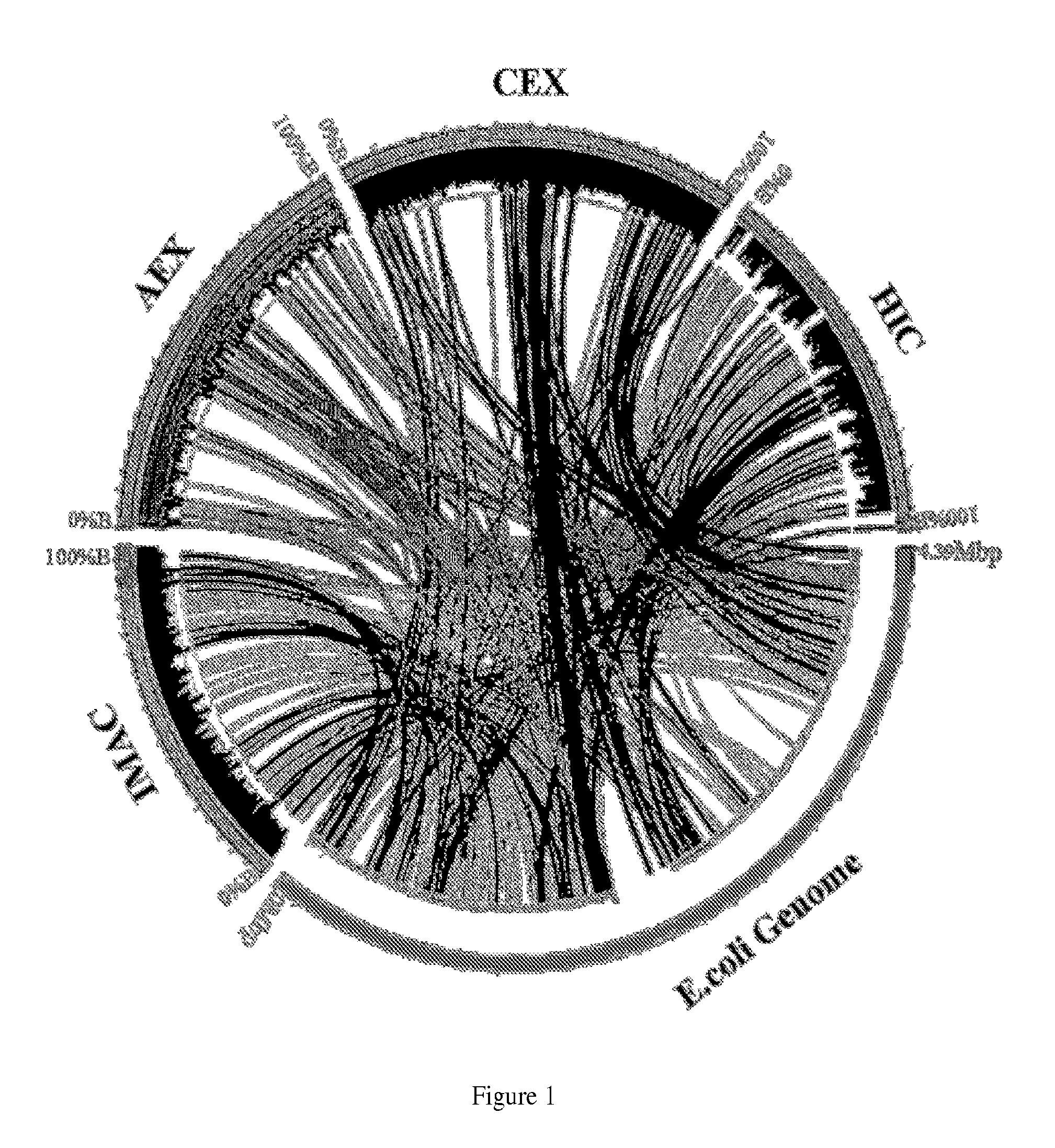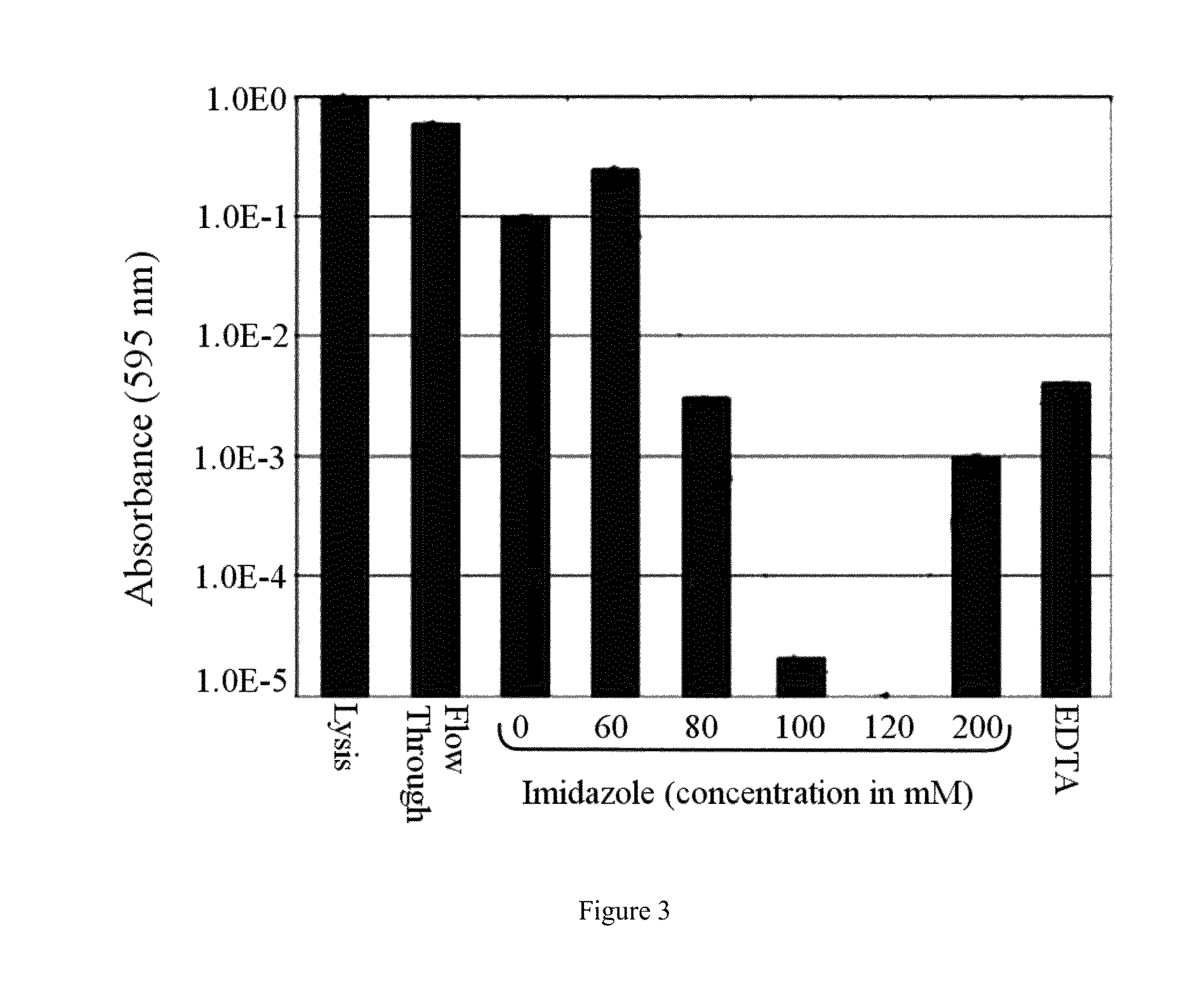Separatome-based protein expression and purification platform
a proteomics-based protein and purification platform technology, applied in the field of proteomics-based protein expression and purification platform, can solve the problems of affecting the production of therapeutically useful peptides, polypeptides and proteins, affecting so as to reduce the expression of genes and increase the efficiency of chromatographic separation
- Summary
- Abstract
- Description
- Claims
- Application Information
AI Technical Summary
Benefits of technology
Problems solved by technology
Method used
Image
Examples
example 1
Identification of Host Cell Proteins Associated with a Specific Product, Histidine-Tagged Green Fluorescent Protein, as a Comparative Example
[0251]This comparative example demonstrates the identification of proteins of the 120 mM imidazole fraction (Ni(II) IMAC) and subsequent gene deletions. It demonstrates how to eliminate host cell contaminants for a specific target recombinant product, Green Fluorescent Protein (GFPuv), extended by a histidine-rich affinity tag (His6-GFP). His6-GFP elutes similarly to other histidine-tagged proteins found in the literature. While this example discloses three gene deletions that, in principle, would enhance the purity of the desired product, the knockouts of cyoA, adhP, and yfbG and their subsequent lack of expression does not favorably impact column capacity. These three proteins are insignificant in the metalloproteome of E. coli. Thus, no changes to the separatome are disclosed that lead to an overall increase in separation efficiency. The tex...
example 2
Construction of the Ion Exchange Separatome of E. coli and its Use to Design and Build Novel Host Strains for a Common Chromatography Resin
[0264]This example describes the process by which a separatome is constructed for a chromatography resin and subsequently used to guide modifications to E. coli to increase chromatographic efficiency. It begins by describing how data are acquired by fractionating an extract derived from fed batch growth over a DEAE ion exchange bed, and continues by constructing the separatome—a data structure that includes information on the genes responsible for identified proteins coupled to a quantitative scoring to rank order molecular biology efforts that lead to a reduced separatome. Finally, construction of example strains is described, concluding with information regarding high priority strain modifications necessary for significant gains in separation efficiency through their deletion, modification, or inhibition.
Cloning Strains and Vectors
[0265]E. coli...
PUM
| Property | Measurement | Unit |
|---|---|---|
| flow rate | aaaaa | aaaaa |
| elution volumes | aaaaa | aaaaa |
| volume | aaaaa | aaaaa |
Abstract
Description
Claims
Application Information
 Login to View More
Login to View More - R&D
- Intellectual Property
- Life Sciences
- Materials
- Tech Scout
- Unparalleled Data Quality
- Higher Quality Content
- 60% Fewer Hallucinations
Browse by: Latest US Patents, China's latest patents, Technical Efficacy Thesaurus, Application Domain, Technology Topic, Popular Technical Reports.
© 2025 PatSnap. All rights reserved.Legal|Privacy policy|Modern Slavery Act Transparency Statement|Sitemap|About US| Contact US: help@patsnap.com



